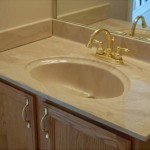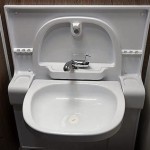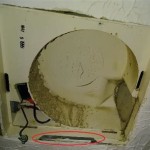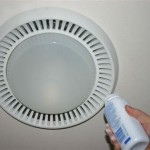Repairing Vintage Fiberglass Bathroom Sinks
Vintage fiberglass bathroom sinks, once a staple of mid-century modern homes, can add a unique charm to any bathroom. However, with age, these sinks can develop cracks, chips, and stains that detract from their beauty and functionality. While replacing a vintage sink might be tempting, repairing it can be a cost-effective and sustainable option, allowing you to preserve the original character of your bathroom. This article will guide you through the process of repairing vintage fiberglass bathroom sinks, providing tips and techniques to restore their pristine appearance.
Assessing the Damage
Before embarking on any repairs, it is crucial to comprehensively assess the damage to your vintage fiberglass sink. This involves identifying the type, extent, and location of the imperfections. Cracks and chips are common issues, and their severity will determine the appropriate repair method. Staining, particularly from rust or hard water, can also be addressed through specific cleaning and restoration techniques. Carefully examining the sink will help you choose the most effective repair approach.
Surface Preparation
Proper surface preparation is essential for a successful and long-lasting repair. It involves cleaning the damaged area to remove dirt, debris, and any existing coatings that might hinder adhesion. Utilize a mild detergent and a non-abrasive sponge to thoroughly clean the surface. For stubborn stains, you can use a specialized fiberglass cleaner or a mild bleach solution. Afterward, thoroughly rinse the area with clean water and allow it to dry completely. This step ensures that the repair material bonds effectively to the fiberglass surface.
Repairing Cracks and Chips
Cracks and chips are common occurrences in vintage fiberglass sinks. Repairing them requires a specific approach depending on their size and depth. For minor cracks and chips, a fiberglass resin patch kit can be used. These kits typically include resin, hardener, and a fiberglass mat or cloth. Follow the manufacturer's instructions carefully to mix the resin and hardener, apply the patch to the damaged area, and allow it to cure completely. For larger cracks, a more extensive repair may be required, involving a combination of fiberglass mat, resin, and a layer of epoxy putty.
Removing Stains
Staining can be a challenging issue to address in vintage fiberglass sinks. The most common culprits are rust and hard water deposits. For rust stains, a rust remover solution can be used to dissolve the rust particles. Apply the solution according to the manufacturer's instructions, allowing it to sit for the recommended time before scrubbing the area with a non-abrasive sponge. For hard water stains, a mixture of baking soda and water can be used to create a paste. Apply the paste to the stained area, let it sit for several minutes, and then scrub with a non-abrasive sponge. Rinse the area thoroughly with clean water.
Smoothing and Finishing
Once the repair is complete, it's important to smooth out the patched area and provide a seamless finish. Sanding is crucial in this step. It helps to blend the repair with the surrounding surface, creating a smooth and even transition. Start with a coarse-grit sandpaper to remove any irregularities, gradually progressing to finer grits to achieve a smooth finish. Ensure that you sand the repaired area in a circular motion, following the contours of the sink. This technique helps to prevent noticeable edges and unevenness. After sanding, you can apply a layer of fiberglass filler or epoxy putty to further smooth the surface and create a uniform finish.
Painting and Sealing
To enhance the aesthetics and protect the repaired area, a coat of paint can be applied. This can refresh the appearance of the vintage sink and match it to the overall bathroom decor. Choose a paint specifically designed for fiberglass surfaces to ensure proper adhesion and durability. Apply the paint in thin, even coats, allowing each coat to dry completely before applying the next. After painting, you can apply a sealant to protect the paint and prevent future damage. Sealants are available in various finishes, such as gloss, matte, and satin, allowing you to customize the appearance of your sink.
Conclusion
Repairing a vintage fiberglass bathroom sink is an achievable project that can breathe new life into your bathroom. By carefully assessing the damage, preparing the surface, using the appropriate repair materials, and finishing the project meticulously, you can restore your vintage sink to its former glory. This process not only preserves the charm of your bathroom but also promotes sustainability by extending the lifespan of your beloved vintage fixture.

How To Fix A Hole In Vintage Porcelain Sink Hometalk

Sink Refinishing Specialized Co

Sink Refinishing Mission Hills Ca

How To Paint A Sink It All Started With

Sink Refinishing Mission Hills Ca

Fiberglass Ceramic Or Porcelain Choosing Bathroom Fixtures Ace Plumbing Heating And Air Conditioning

Sink Reglazing Los Angeles By The Professional Company

Fiberglass Wash Basin Sink Guide Great Arad Branding

Transform Your Bathroom With Sink Paint The Honeycomb Home

How To Repair The Surface Of An Enamel Sink Ehow
Related Posts







